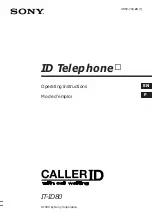
Appendix
435
Step
Action
Description
response indicates that User B accepts
the transfer.
F27
BYE—User A to Proxy Server
User A terminates the call session by
sending a SIP BYE request to the proxy
server. The BYE request indicates that
User A wants to release the call.
F28
BYE—Proxy Server to User B
The proxy server forwards the BYE
request to User B.
F29
200OK—User B to Proxy
Server
User B sends a SIP 200 OK response to
the proxy server. The 200 OK response
notifies User A that User B has received
the BYE request.
F30
200OK—Proxy Server to User
A
The proxy server forwards the SIP 200
OK response to User A.
The following figure illustrates successful call forwarding between Yealink SIP IP phones
in which User B has enabled always call forward. The incoming call is immediately
forwarded to User C when User A calls User B. In this call flow scenario, the end users
are User A, User B, and User C. They are all using Yealink SIP IP phones, which are
connected via an IP network.
The call flow scenario is as follows:
1.
User B enables always call forward, and the destination number is User C.
2.
User A calls User B.
3.
User B forwards the incoming call to User C.
Summary of Contents for SIP-T4X
Page 1: ......
Page 10: ...Administrator s Guide for SIP T4X IP Phones x ...
Page 144: ...Administrator s Guide for SIP T4X IP Phones 128 ...
Page 212: ...Administrator s Guide for SIP T4X IP Phones 196 ...
Page 224: ...Administrator s Guide for SIP T4X IP Phones 208 ...
Page 240: ...Administrator s Guide for SIP T4X IP Phones 224 ...
Page 252: ...Administrator s Guide for SIP T4X IP Phones 236 ...
Page 264: ...Administrator s Guide for SIP T4X IP Phones 248 ...
Page 472: ...Administrator s Guide for SIP T4X IP Phones 456 ...
















































